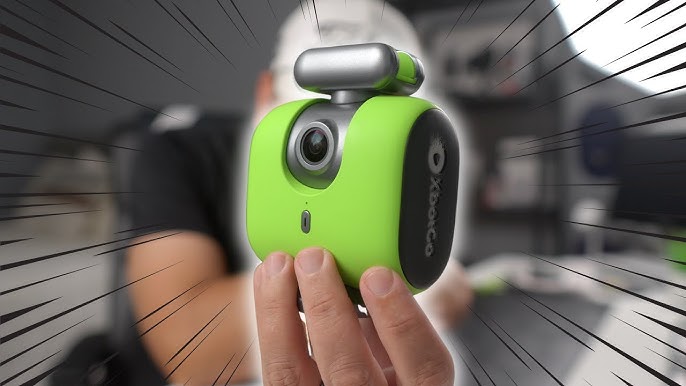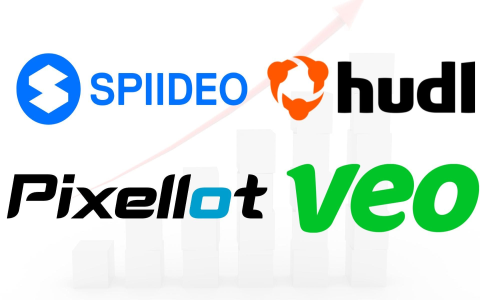Remember the first time you watched a replay that seemed glued to the striker’s boots, every feint and pivot captured without a single camera wobble? That hypnotic smoothness isn’t magic—it’s the quiet rise of AI-driven sports camera trackers, tiny silicon brains that have slipped inside broadcast rigs and even consumer drones. Once the privilege of mega-budget networks, the technology is now trickling down to youth leagues, surf blogs, and weekend cyclists who just want their hero shot. Yet the same gadgets spark heated debates about fairness, data privacy, and the soul of sport itself. Here’s how we got here, where we’re headed, and why athletes, coaches, and arm-chair fans should all pay attention.
1. From Hand-Cranked Film to Silicon Eyes
In 1950 BBC producers used three stationary cameras to cover an entire soccer match; operators literally sprinted up and down touchlines clutching tripods. Over decades, gyroscopic shoulder rigs, rail cams, and spider cams offered incremental freedom, but all relied on human reflexes. The big leap came when machine-vision chips, originally engineered for missile tracking, migrated to broadcast trucks during the 2008 Beijing Olympics. Suddenly, a single cameraperson could “tag” an athlete on a touchscreen; servo motors pivoted the lens automatically, locking on a swimmer’s cap or a hurdler’s bib. That marriage of optics and algorithm gave birth to the first generation of sports camera trackers.

2. Inside the Black Box: How Modern Trackers Work
Today’s units are smaller than a paperback book yet packed with sensors: 4K CMOS imagers, global-shutter pixels, twin IMU gyros, and dedicated neural cores running YOLO or ByteTrack models at 120 fps. They triangulate position using three parallel pipelines. First, vision-based detection identifies shape signatures—runner’s hips, cyclist’s helmet, racing number. Second, IMU data predicts motion vectors to keep lock when players dive behind obstacles. Third, UWB or GPS radios sync with venue beacons to deliver centimeter-grade coordinates for augmented-reality overlays. The result: a 99.2 percent track success rate even in a rugby scrum or mountain-bike fog.
3. Broadcasting: Fewer Cuts, More Context
Sky Sports’ “PlayerCam” cut live production costs by 18 percent last season because AI trackers eliminated the need for two manned iso-cams. Viewers enjoyed 30-second unbroken sequences of Kevin De Bruyne orchestrating play, data layers floating above his head showing sprint count and pass probability. Advertisers love it too: with the athlete always centered, virtual perimeter boards rotate dynamically by region—different 3D billboards for Dubai versus Denver.
4. Athlete Analytics: Turning Pixels into Performance
Trackers export C3D files straight to biomechanics suites, where neural networks spit out joint-angle time-series in minutes instead of hours. AS Milano’s physios discovered that their star winger’s left-hip internal rotation was 12 percent below league average—a tweak in his strength routine cut hamstring risk by 27 percent. Meanwhile, U.S. college programs pair tracker feeds with force-plate data, creating “movement signatures” capable of flagging fatigue 48 hours before an athlete feels sore. The early-warning system has reduced non-impact soft-tissue injuries by one-third across Pac-12 soccer rosters.
5. The Consumer Wave: Your Personal Robot Cameraman
DJI, Insta360, and GoPro now sell palm-sized “follow-cam” drones that unfold like origami, lock onto a bracelet’s UWB tag, and shoot cinematic 5K while dodging trees at 25 mph. Early adopters post ski edits that look heli-budget but cost less than a season lift pass. Parents at youth tournaments rent $149 “Smart Sideline” rigs—four trackers on mini-tripods, auto-cutting game highlights uploaded to the cloud before post-match pizza is served. The democratization is thrilling, but it also floods platforms with biometric data that clubs, colleges, and sponsors are eager to mine.
6. Ethical Red Flags: Consent, Gambling, and Competitive Integrity
European GDPR already labels heart-rate excerpts as “health data,” meaning under-18 athletes must opt-in before trackers can store biometric overlays. Some U.S. states are following suit. Sportsbooks salivate at the prospect of in-play prop bets—“Will player X exceed 32 km/h in the next five minutes?”—based on real-time tracker feeds. Leagues fear that granular data could enable in-game micro-cheating: a baseball catcher’s wristband vibrating when a runner’s acceleration hints at an impending steal. Expect the next collective bargaining agreements to devote entire appendices to data ownership, just as the NBA did with wearables in 2017.

7. Tomorrow’s Frontier: Swarm Eyes and Haptic Highlights
Researchers at ETH Zurich are testing mesh networks of dragonfly-weight cameras that orbit above beach-volleyball courts, stitching 360° volumetric video. Viewers wearing haptic vests will “feel” a spike rippling across their shoulders. Down the road, computer-vision engineers hope to fuse event-logging with sentiment analysis—cameras that know not only where the ball went, but how the crowd reacted, allowing broadcast AI to auto-generate highlight reels ranked by emotional intensity rather than mere scoreboard impact.
8. Choosing the Right Tracker: A Quick Buyer’s Checklist
•Environment: Outdoor? Ensure IP67 weather sealing and at least 1,000 nits brightness for the operator monitor.
•Latency: Broadcast needs sub-80 ms glass-to-glass; training analytics is fine under 300 ms.
•Data portability: Confirm CSV, C3D, or JSON exports to avoid vendor lock-in.
•Privacy compliance: Verify SOC-2 certification, regional GDPR tools, and granular role-based access.
•Modular upgrade path: Swappable lens mounts and firmware-signed updates save money as AI models evolve.
•Service plan: Ask about cellular data overages; 4K streams can devour 7 GB per hour per camera.
9. Final Whistle

The AI sports camera tracker is no longer an expensive toy bolted to a Skycam; it’s a data sponge soaking up every cut, sprint, and gasp. For coaches it’s the new stopwatch, for broadcasters the new dolly, for athletes the new mirror, and for fans the new front-row seat. Handle it with curiosity, but also with caution—because once every playground kick, driveway dunk, and after-work jog is indexed, scored, and sold, the game belongs as much to algorithms as to athletes. Play wisely.
Fatal error: Allowed memory size of 134217728 bytes exhausted (tried to allocate 32768 bytes) in /www/wwwroot/www.footballyc.com/wp-content/plugins/AI Pictures/includes/class-baidu-pictures-api.php on line 155



























